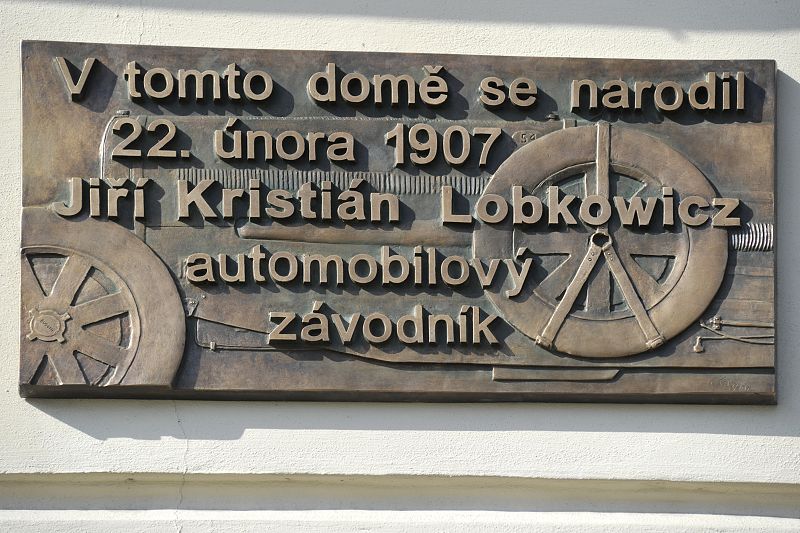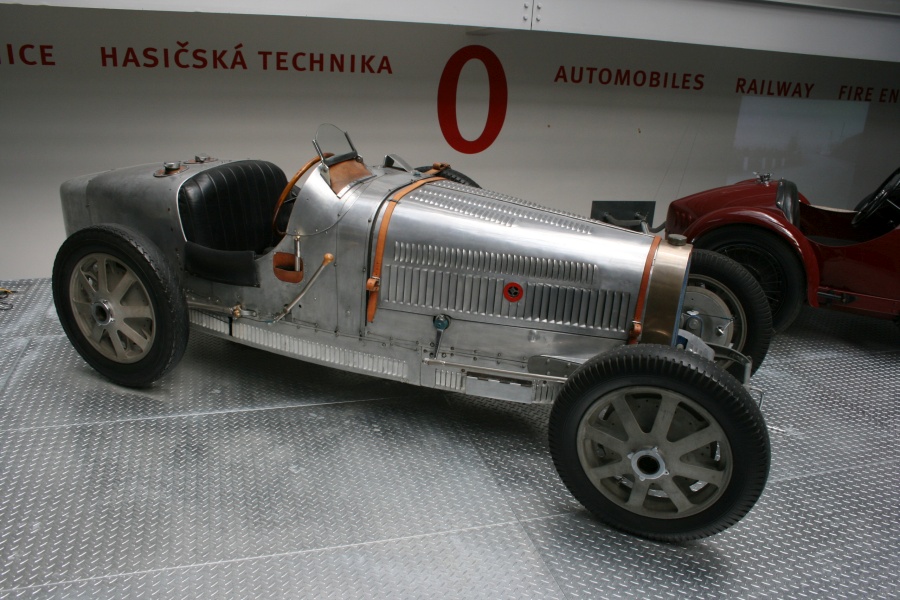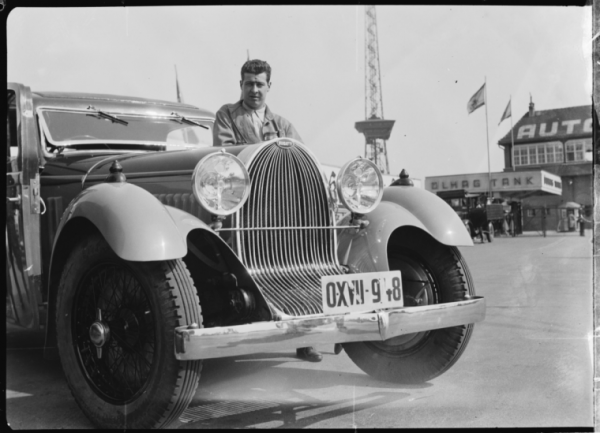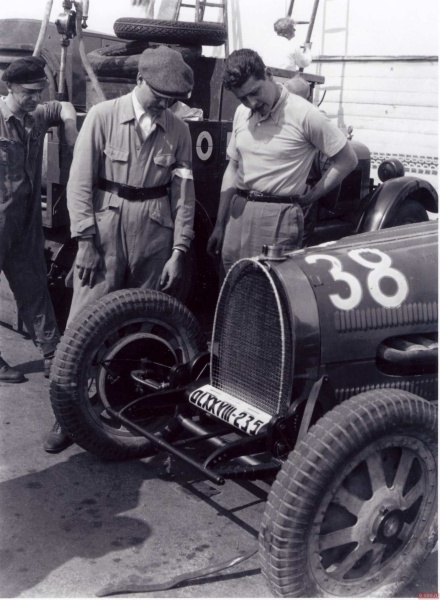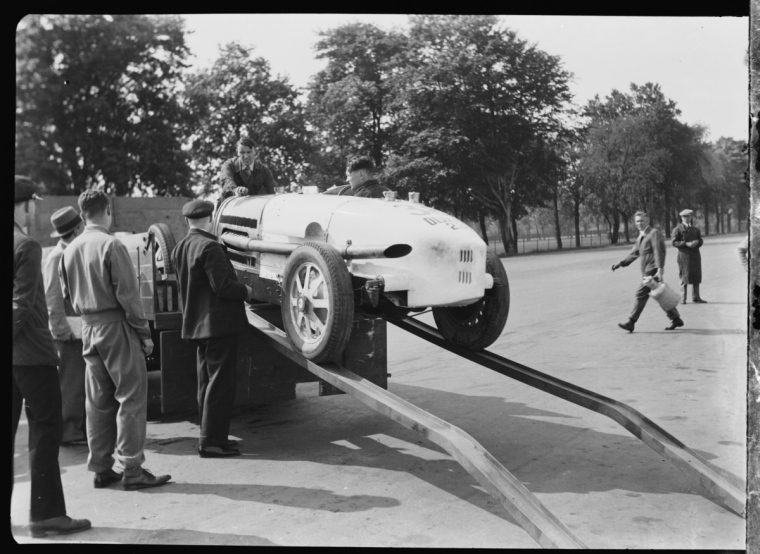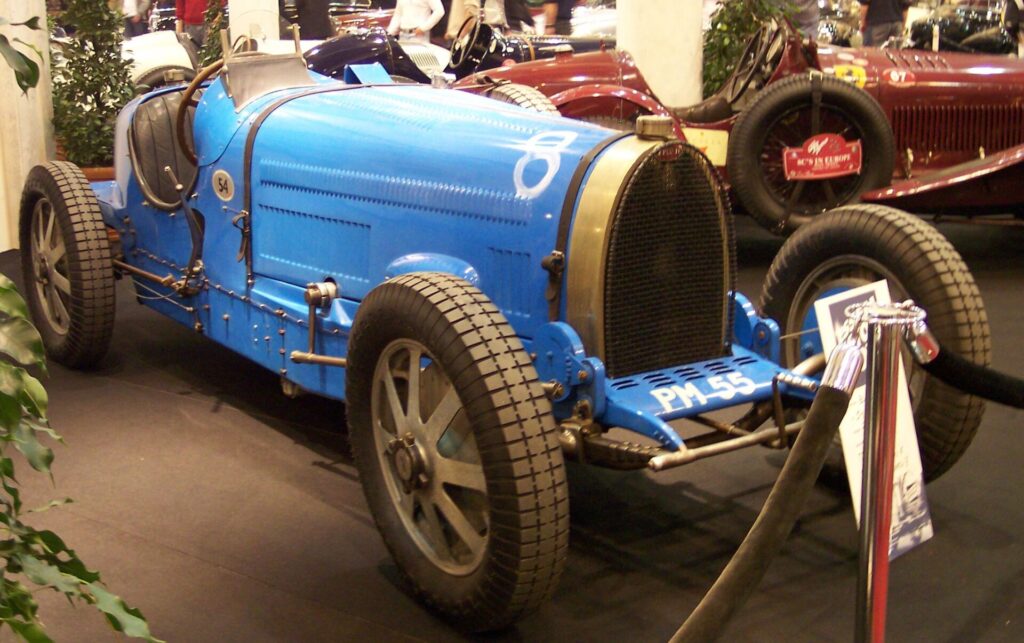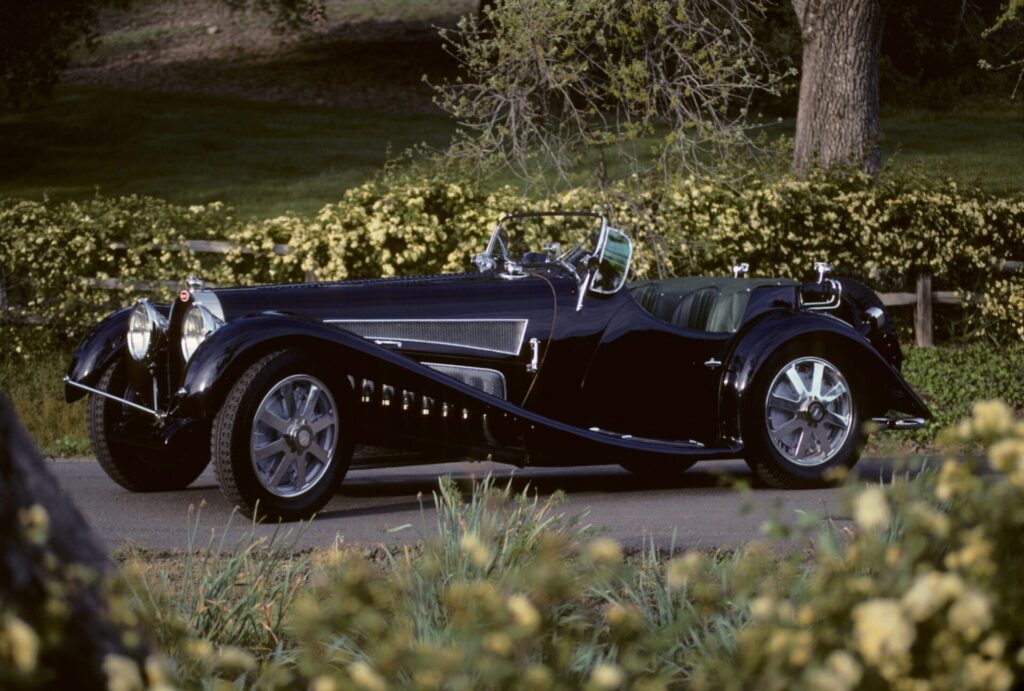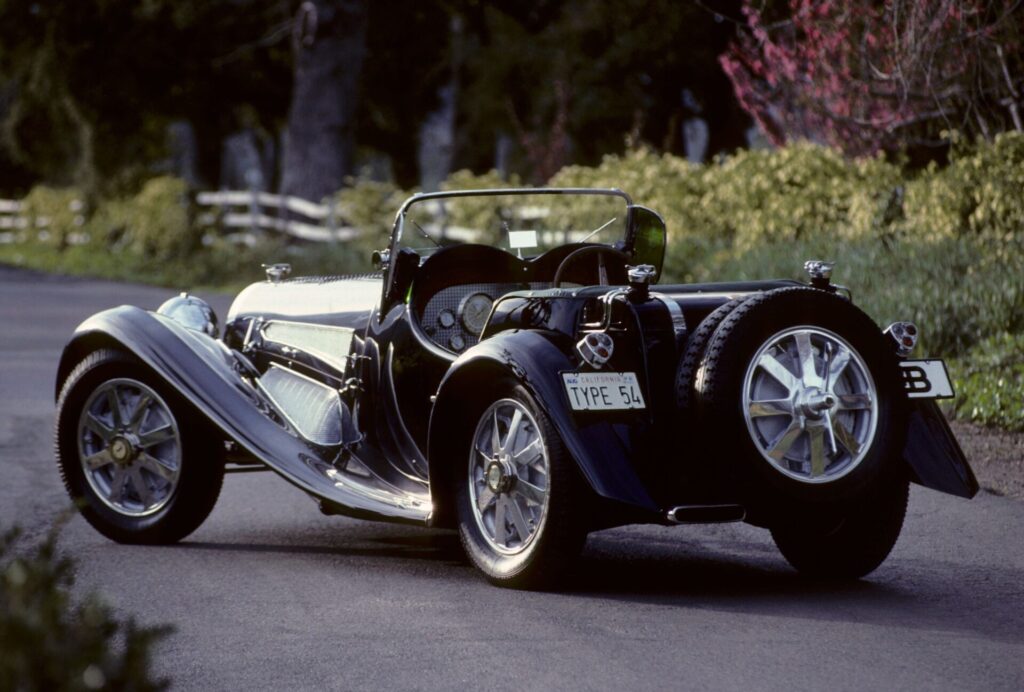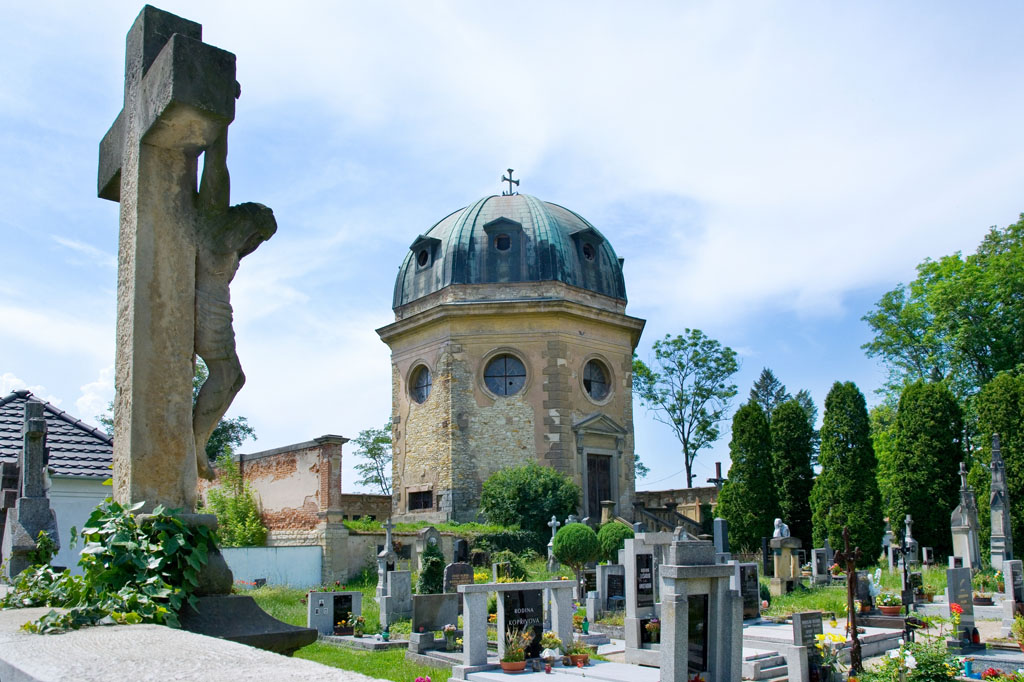Famous racing drivers: Jiří Kristián Lobkowicz
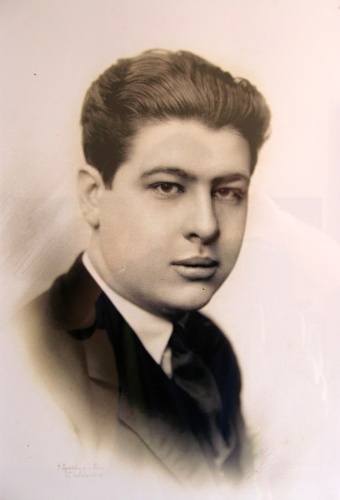
The native from Turnov J. K. Lobkowicz, rowing lover, was in society captivated by his appearance, at that time an impressive 183 cm tall stature. However, he enrolled to history mainly for his achievements behind the wheel racing machines Bugatti including the fourth place overall in the Grand Prix, but also with his untimely death at German AVUS circuit in 300 HP type 54 with the tricky drivability.
On the February the 22nd 1907 was born Jiří Kristián, from the next heir of Lobkowicz, primarily associated with manor houses at Mělník and the nearby Hořín (the family sold the Palace on the Valašská Street in Prague because after land reform they got impoverished). Some sources mention as a birthplace farm house near Turnov, however the others house near Jizera, opposite Turnov Juta – you can find there his memorial. He grew up in the First Czechoslovakian Republic as a “former nobleman” because the democratic establishment cancelled the aristocratic titles and social privileges. Although he passionately rowed, he apparently didn’t pass at the military conscription for the chronic catarrh of the small intestine. Today, the physicians would classify his disease differently, perhaps as autoimmune disease, Crohn’s disease or ulcerative colitis.
Like his friend Zdenek Pohl, known for racing and acrobatics on American Indians, young Lobkowicz began with motorcycles. They allegedly crossed the Park by castle Hořín in an alarming rate. His family financed the purchasing of the motorcycles and vehicles among others from the proceeds wineries at the Mělník.
On the 26th of August 1928, on his apparently first race Pšovka-Mělník, Jiří Kristián Lobkowicz drove on the Austro-Daimler constructed by the countryman Ferdinand Porsche, a native from the Vratislavice nad Nisou. It’s been said, that he ended after only 1,200 meters because at the high speed he shifted into reverse, which tore the gearbox housing. The young man got to the finish on the velocipede on the one of the spectators.
The vehicles of the famous brand with the characteristic radiator evoking a horseshoe thoroughbreds raised by Ettore Bugatti “served” to Lobkowicz only for three years. In February 1929 arrived to middle of the Czech Republic four-cylinder, the type 37 A, supercharged 1500cc with 90bhp. Shortly after its composition in the former stables Hořín, the twenty-two years old owner full of joy dashed out to practice before the race, uphill the Zbraslav-Jíloviště. At the shear he smashed thetelegraph pole.
Like many of his predecessors, including Saša Kolowrat-Krakowský, he started under a pseudonym to not worry the closest relatives and not discredit the family name. The Hýta nickname referred to the character from the popular children’s books, Zdeněk Pohl was called Bašul for change. The victory in the class up to 1500cm3 on the Ecce Homo and the third place overall with the international competitors, confirmed the high quality of the machine and a young racing driver. For the next year the Type 37 was replaced by supercharged two-litter Bugatti 35C, the winner of its category at the Zbraslav in the 1930’s. In the First year of the Masaryk circuit, Lobkowicz end up at this race because of fault ignition, magnetos accurately. The repair lasted for over an hour, what talented racing driver excluded from the contest.
The year 1931 was marked by further “rearmament” during which time Zdeněk Pohl got from a friend for Christmas Type 37. Besides, the generous donor drove the two cam eight cylinder Bugatti 51 since the summer and according to many people, possibly the last fully competitive and its facilities, a balanced model “Molsheims magician”. From the 2.3 liter it was able to obtain 180 horsepower, enabling speed of over 220 km/h. In 1931 Lobkowicz with the 51 flourished at the Masaryk Circuit, in the race series Grand Prix (the predecessor of the Formula 1 series) and finished at the fourth position overall. Faster were only masters such as Chiron, von Stuck and von Morgan.
The others from the Bugatti pulled a young Czechoslovakian into the destruction. Prior to the extreme immaturity of the construction of the type 54, apparently developed in just 13 days, his mentor and the domestic dealer of the brand ing. Gut allegedly warned Lobkowicz. It’s been said that he even sent Bugatti a telegram to not sell that beast to an inexperienced young man. But the economic crisis raged everywhere and each franc was good, even the amount of FRF 146,000. Lobkowicz got the first piece produced with the chassis number 54201, but the payment didn’t happen.
Nearly five-liter straight-eight engine with an output of 300 hp (221 kw) didn’t fit to primitive chassis and even the center of gravity position, under sized brakes and transmission was wrong. The four-stage gearbox was torn, that’s why the designers opted for a more robust three-stage. Repairing a broken gearbox pushed a test drives to up to three days before the fatal race on the main road from Berlin to Potsdam, part of Avus racetrack.
On the calendar was the May 22nd 1932. Lobkowicz enlisted as the last, until the last moment he didn’t know if the car will be all right and our authorities will authorize the export of the currency.
He crashed in the first round, flew out from the corner when overtaking. He swerved, the car went into shear, flew up to the embankment of the Berlin-Bahnand and smashed on the trees. To shocked princess, whose son died in her arms after being taken to hospital, the importer Gut dared bother outstanding invoices for deadly 54. The Bugatti 54 was passed from his ownership to a property of Zdeněk Pohl, who let the car in 1936 rebuild by Oldřich Uhlík to a roadster called “Prague”. In the ’70s this “jewel” was sold to a British collector Peter Hampton, who decided to build the replica of racing T 54. The Úhlík’s creation was placed on a chassis Bugatti 55 and both of the cars remained in the hands of various collectors abroad.
Jiří Kristián Lobkowicz has not been forgotten at home, as evidenced by the forementioned plaque on his home house, the exposure of the family Mělnik Castle or commemorative events organized in his honor.

